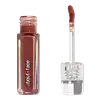What's inside
What's inside
 Key Ingredients
Key Ingredients

 Benefits
Benefits

 Concerns
Concerns

 Ingredients Side-by-side
Ingredients Side-by-side

Hydrogenated Polyisobutene
EmollientCaprylic/Capric Triglyceride
MaskingEthylene/Propylene/Styrene Copolymer
CI 77891
Cosmetic ColorantCI 77492
Cosmetic ColorantCocos Nucifera Oil
MaskingPhenoxyethanol
PreservativeCI 15850
Cosmetic ColorantButylene/Ethylene/Styrene Copolymer
CI 77499
Cosmetic ColorantLavandula Angustifolia Oil
MaskingMentha Piperita Oil
MaskingPentaerythrityl Tetra-Di-T-Butyl Hydroxyhydrocinnamate
AntioxidantTocopherol
AntioxidantHydrogenated Polyisobutene, Caprylic/Capric Triglyceride, Ethylene/Propylene/Styrene Copolymer, CI 77891, CI 77492, Cocos Nucifera Oil, Phenoxyethanol, CI 15850, Butylene/Ethylene/Styrene Copolymer, CI 77499, Lavandula Angustifolia Oil, Mentha Piperita Oil, Pentaerythrityl Tetra-Di-T-Butyl Hydroxyhydrocinnamate, Tocopherol
Hydrogenated Polyisobutene
EmollientDiisostearyl Malate
EmollientCaprylic/Capric Triglyceride
MaskingEthylene/Propylene/Styrene Copolymer
Butylene/Ethylene/Styrene Copolymer
Limnanthes Alba Seed Oil
Skin ConditioningJojoba Esters
EmollientEthylhexyl Palmitate
EmollientTocopherol
AntioxidantHelianthus Annuus Seed Oil
EmollientButyrospermum Parkii Butter Extract
Skin ConditioningTetrahexyldecyl Ascorbate
AntioxidantPentaerythrityl Tetra-Di-T-Butyl Hydroxyhydrocinnamate
AntioxidantCitrus Aurantium Dulcis Peel Extract
Emulsion StabilisingCitrus Tangerina Peel Extract
AstringentTrihydroxystearin
Skin ConditioningSalicornia Herbacea Extract
Skin ConditioningCitrus Grandis Peel Extract
AstringentCitrus Junos Peel Extract
Skin ConditioningCitrus Clementina Fruit Extract
Skin ConditioningHedychium Spicatum Extract
Skin ConditioningVanilla Planifolia Fruit Extract
Skin ConditioningZingiber Officinale Root Extract
MaskingSodium Hyaluronate
HumectantGlucomannan
Skin ConditioningLimonene
PerfumingTitanium Dioxide
Cosmetic ColorantCI 77491
Cosmetic ColorantCI 77492
Cosmetic ColorantCI 77499
Cosmetic ColorantCI 15850
Cosmetic ColorantCI 19140
Cosmetic ColorantCI 73360
Cosmetic ColorantHydrogenated Polyisobutene, Diisostearyl Malate, Caprylic/Capric Triglyceride, Ethylene/Propylene/Styrene Copolymer, Butylene/Ethylene/Styrene Copolymer, Limnanthes Alba Seed Oil, Jojoba Esters, Ethylhexyl Palmitate, Tocopherol, Helianthus Annuus Seed Oil, Butyrospermum Parkii Butter Extract, Tetrahexyldecyl Ascorbate, Pentaerythrityl Tetra-Di-T-Butyl Hydroxyhydrocinnamate, Citrus Aurantium Dulcis Peel Extract, Citrus Tangerina Peel Extract, Trihydroxystearin, Salicornia Herbacea Extract, Citrus Grandis Peel Extract, Citrus Junos Peel Extract, Citrus Clementina Fruit Extract, Hedychium Spicatum Extract, Vanilla Planifolia Fruit Extract, Zingiber Officinale Root Extract, Sodium Hyaluronate, Glucomannan, Limonene, Titanium Dioxide, CI 77491, CI 77492, CI 77499, CI 15850, CI 19140, CI 73360
Ingredients Explained
These ingredients are found in both products.
Ingredients higher up in an ingredient list are typically present in a larger amount.
We don't have a description for Butylene/Ethylene/Styrene Copolymer yet.
This ingredient is an emollient, solvent, and texture enhancer. It is considered a skin-softener by helping the skin prevent moisture loss.
It helps thicken a product's formula and makes it easier to spread by dissolving clumping compounds.
Caprylic Triglyceride is made by combining glycerin with coconut oil, forming a clear liquid.
While there is an assumption Caprylic Triglyceride can clog pores due to it being derived from coconut oil, there is no research supporting this.
Learn more about Caprylic/Capric TriglycerideCi 15850 is the pigment color red. It is an azo dye and created synthetically.
Azo dyes need to be thoroughly purified before use. This allows them to be more stable and longer-lasting.
This ingredient is common in foundations, lipsticks, and blushes. This color is described as brown/orangey red.
It has many secondary names such as Red 6 and Red 7. According to a manufacturer, Red 6 usually contains aluminum.
Learn more about CI 15850Ci 77492 is also hydrated iron III oxide. It's sole purpose is to give a yellow hue to products.
Iron III oxides are classified as inorganic chemicals for coloring.
Synthetically created Ci 77492 is considered safer than those naturally found. This is because the synthetically created version may contain less impurities. Iron oxides are generally non-toxic and non-allergenic.
Learn more about CI 77492Ci 77499 is also hydrated iron III oxide. It is created from mixing red and black iron oxides. This helps give shades of darkness to a product.
Iron III oxides are classified as inorganic chemicals for coloring.
We don't have a description for Ethylene/Propylene/Styrene Copolymer yet.
Hydrogenated Polyisobutene is a synthetic polymer. Polymers are compounds with high molecular weight. Hydrogenated Polyisobutene is an emollient and texture enhancer.
In one study, Hydrogenated Polyisobutene showed better skin hydration levels than Caprylic/Capric Triglyceride. As an emollient, it helps keep your skin soft and hydrated by trapping moisture in.
Hydrogenated Polyisobutene is often used as a mineral oil replacement.
Learn more about Hydrogenated PolyisobutenePentaerythrityl Tetra-Di-T-Butyl Hydroxyhydrocinnamate (long name, huh?) is a synthetic antioxidant.
It is used to help stabilize other antioxidants or prevent the color from changing in a product.
As an antioxidant, it helps fight free-radical molecules. Free-radical molecules are capable of damaging our cells and other genetic material. Thus, antioxidants may reduce the signs of aging.
This ingredient is oil-soluble.
Learn more about Pentaerythrityl Tetra-Di-T-Butyl HydroxyhydrocinnamateTocopherol (also known as Vitamin E) is a common antioxidant used to help protect the skin from free-radicals and strengthen the skin barrier. It's also fat soluble - this means our skin is great at absorbing it.
Vitamin E also helps keep your natural skin lipids healthy. Your lipid skin barrier naturally consists of lipids, ceramides, and fatty acids. Vitamin E offers extra protection for your skin’s lipid barrier, keeping your skin healthy and nourished.
Another benefit is a bit of UV protection. Vitamin E helps reduce the damage caused by UVB rays. (It should not replace your sunscreen). Combining it with Vitamin C can decrease sunburned cells and hyperpigmentation after UV exposure.
You might have noticed Vitamin E + C often paired together. This is because it is great at stabilizing Vitamin C. Using the two together helps increase the effectiveness of both ingredients.
There are often claims that Vitamin E can reduce/prevent scarring, but these claims haven't been confirmed by scientific research.
Learn more about Tocopherol